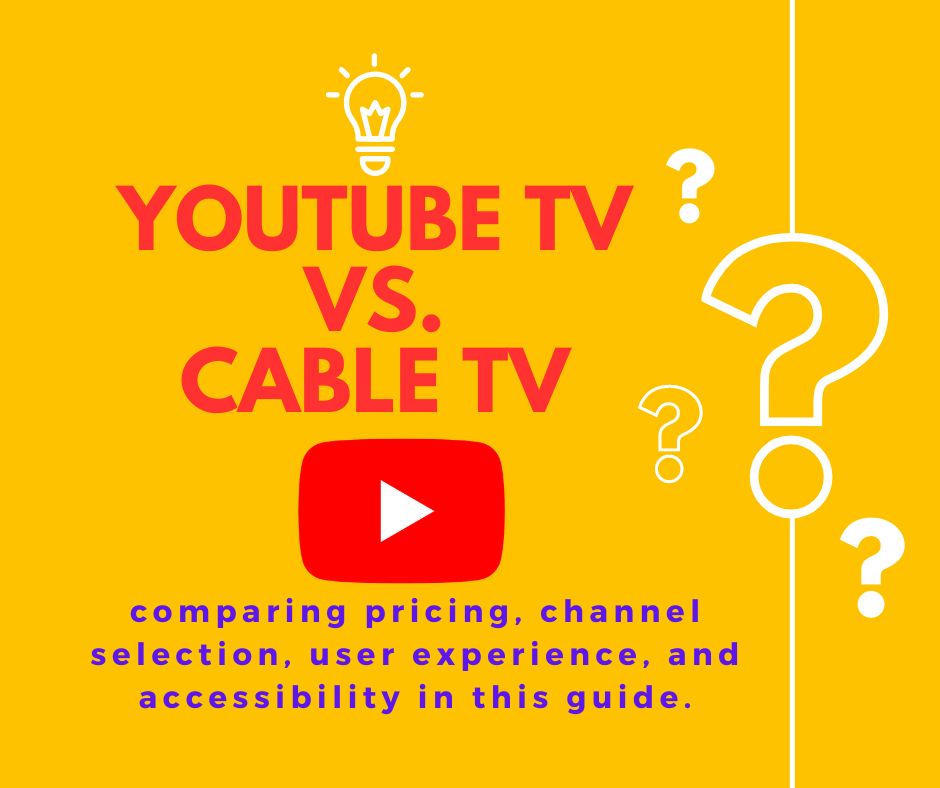When it comes to choosing a TV provider, there are now more options than ever before. Cable TV has long been the norm, but now streaming services like YouTube TV are changing the game. With so many options to choose from, it can be difficult to decide which one is right for you. In this article, we’ll compare YouTube TV and Cable TV and help you make an informed decision about which one to choose.
Pricing
One of the most important factors to consider when choosing a TV provider is pricing. Cable TV providers typically offer a variety of packages at different price points, while YouTube TV has a set monthly fee. The cost of Cable TV varies depending on the package, but it generally starts at around $50 per month and can go up to $150 or more for premium packages.
On the other hand, YouTube TV costs $64.99 per month for the base plan. While Cable TV providers often charge additional fees for things like equipment rental and installation, YouTube TV’s pricing includes everything you need to get started.
Channels
Another important factor to consider is the availability of channels. Cable TV providers typically offer a wide range of channels, including local channels and premium channels like HBO and Showtime. However, not all channels are available in all packages, and some may require an additional fee.
YouTube TV offers a variety of channels, including local channels, sports channels, and premium channels like Showtime and Starz. While the number of channels available is more limited than with Cable TV, YouTube TV’s channel lineup is still impressive and includes popular networks like ABC, CBS, and NBC.
Features
When it comes to features, there are some key differences between YouTube TV and Cable TV. For example, YouTube TV offers a cloud DVR with unlimited storage, while Cable TV providers typically offer a physical DVR with limited storage space. Additionally, YouTube TV allows for up to three simultaneous streams, while Cable TV providers often charge extra for additional streams.
Another feature that sets YouTube TV apart is its on-demand content. While Cable TV providers also offer on-demand content, YouTube TV’s on-demand library is more extensive and includes a wide range of TV shows and movies.
Accessibility
Finally, it’s important to consider the accessibility of each option. Cable TV requires physical equipment and installation, while YouTube TV can be accessed from a variety of devices, including smartphones, tablets, and smart TVs. This means that with YouTube TV, you can watch TV on the go or from the comfort of your own home without any additional equipment.
Conclusion
Ultimately, the choice between YouTube TV and Cable TV depends on your individual needs and preferences. If you’re looking for a wide range of channels and don’t mind the physical equipment, Cable TV might be the better option for you. However, if you want a more streamlined and accessible TV experience, YouTube TV might be the way to go. With its cloud DVR,
Common Questions and Answers
What is YouTube TV?
How is YouTube TV different from Cable TV?
YouTube TV is more flexible, allowing you to watch TV on any device with an internet connection and offering a more personalized experience with unlimited DVR storage and tailored recommendations.
Cable TV may offer more traditional viewing options and potentially lower base prices but can be less flexible and limited in terms of DVR storage and accessibility.
How much does YouTube TV cost compared to Cable TV?
Can I watch live sports on YouTube TV?
Does Cable TV offer more channels than YouTube TV?
Can I watch local channels on YouTube TV?
Is YouTube TV available in my area?
These are just a few common questions people may have when comparing YouTube TV and Cable TV. Ultimately, the decision between the two services depends on personal preferences and priorities.
